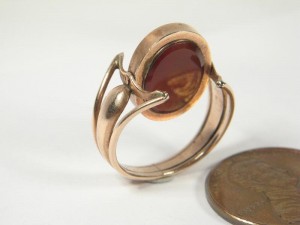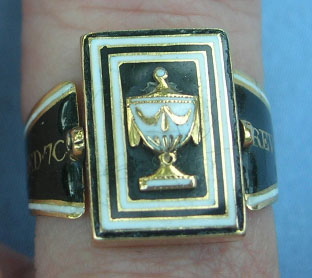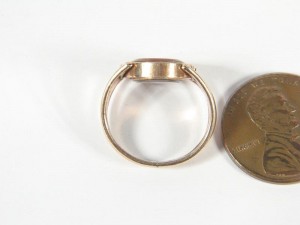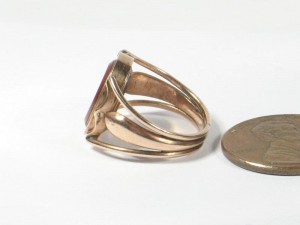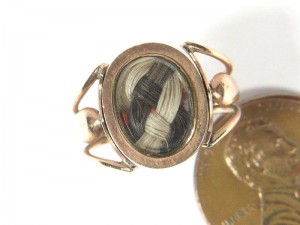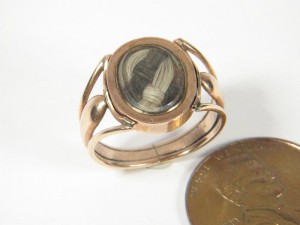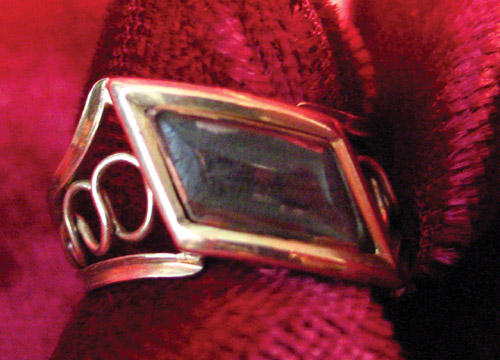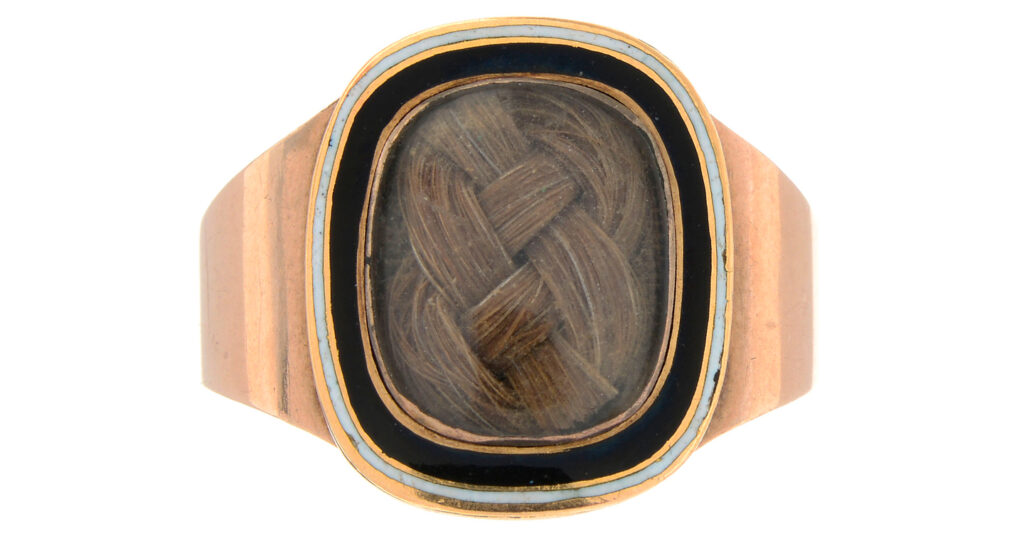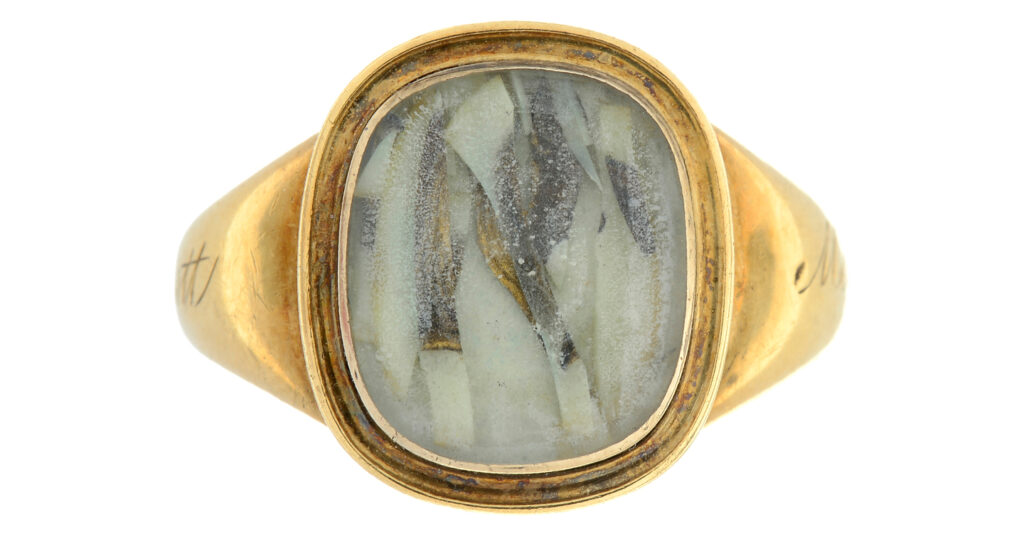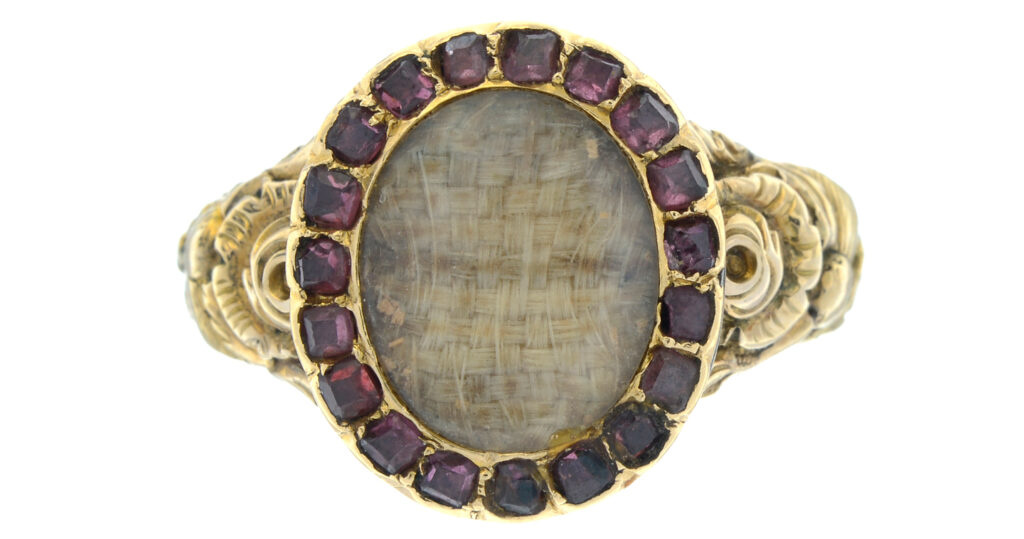A Very Sentimental Locket Swivel Ring, 19th Century
Even the simplest of designs from the early 19th century show a multitude of burgeoning ideas and new perceptions about the evolving era. This ring shows, even from its most simplest aspects, the various ways in which the society of the early 19th century interpreted their love and friendship, which was a stark contrast to the generation before.
Firstly, the swivel speaks for the ring in a holistic way. This technique was one that was being explored in the early 19th century, as it was in use beforehand, but not to the degree that the 19th century would utilise this method of hiding a loving keepsake. From a social point of view, this is an important factor. Not only hair mementoes, but the larger portraits and allegorical romantic depictions of the Neoclassical era were designed to be large and as obvious to who saw it as possible. The amount of symbolism that could be infused within he design was important to the wearer in terms of how they portrayed their love for another.
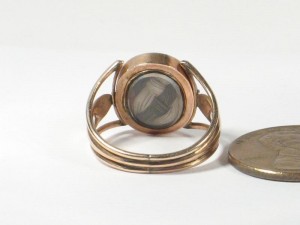
Here, we have the ring hiding the loved one away, much in the same manner as the Georgian Eye portraits hid the face of the loved one and only revealed the anonymous eye. Social changes on the state of romance were looking increasingly insular, which reflects upon a society that was more mobile and could generate wealth to travel further. A loved one, or a token for a loved one, could be made, given and worn without the rigid social proprieties being followed, particularly in the case of hair, which was a more fluid gift between friends and family in the 17th-19th centuries.
Here, the swivel shows the personal nature of the jewel and how that the hair being hidden underneath the carnelian holds it closer to the wearer’s skin. The carnelian itself is an agate which has the symbolic connection to ‘friendship’, first and foremost, with ‘contentment’ and ‘friendship in sorrow’ being ancillary meanings. Here, we can see the showing of the carnelian to be friendship, as the hair is woven with two colour, with the blonde and brown. Two friends are connected through the jewel and it could be suggested that another exists of the same type, but until found, that is supposition.
Shoulders and shank show the open three-tiered style that was being experimented with in the early 19th century and is a good marker for collectors today to help identify the ring. The styles that were toyed with through this era show how there was no singular standardisation, but a mix of various elements to depict the hair memento or gem. Looking back to a social point of view, gems and their ‘magic properties’ was becoming popular to overtake the loving allegorical symbols, particularly because the influx of gems and the growing number of gemologists with which to cut them, were growing rapidly. Accessibility is one of the major catalysts in new styles; it only takes a popular figure to disseminate their use through society.
Further Reading
> Black Enamel Swivel Ring, 1798 “Sacred to Friendship”
> Anna Schrarn, 1881 Locket Ring
> Discovering a 19th Century Swivel Ring
> Elegant 19th Century Envelope Ring
> Space Oddity; Understanding a Hinged / Locket Sentimental Ring with Hair
> Ring Design in the Early 19th Century: Oval and Rectangle
> Ring Design in the Early 19th Century: Open Shank
> Spotlight On: c.1800 Twist Ring
> Hold the Shank




